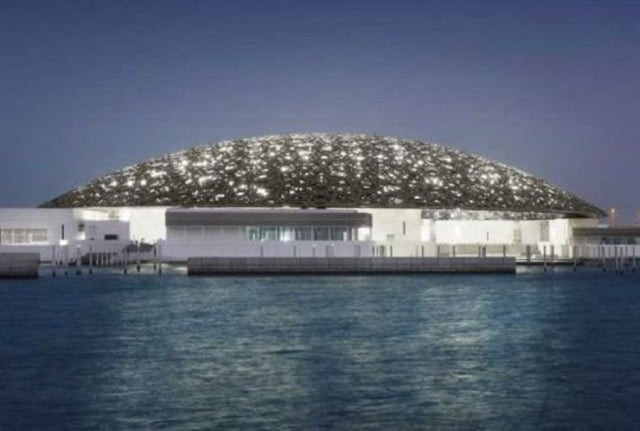
According to reports, the museum authorities claimed that more than one million tourists from around the world had visited the establishment since it was first opened for the general public in late 2017, with people from India, Germany, China, United States and France making up almost 60 per cent of the total visitors.
The museum was inaugurated by French President Emmanuel Macron last year, with hundreds of works of art from all over the globe on display in different galleries. The breath-taking new enterprise also featured borrowed pieces from Agence France-Muséums, including works by Leonardo da Vinci, Vincent van Gogh and Pablo Picasso.
Back in 2007, the Louvre Museum in Paris had signed an agreement, valid for thirty years, and reportedly worth $525 million, with the Emirate of Abu Dhabi to let the latter use the Louvre name for a new branch. News media reported that another $750 million would be provided to France by Abu Dhabi for management and assistance related to the new Louvre during this time period.
The deal was part of an aggressive push by UAE to project 'soft power' in the region through the use of art, literature, theatre and music. The governments of the emirates reflected back fondly to a time when cultural capitals of the world were located in the Middle East, with Baghdad, Cairo, Damascus, Tehran and Beirut occupying positions of power within the artistic and literary worlds.
However, as conflict and climate change have taken a toll, these cities have slowly been robbed of this historic importance, and newer, more wealthy urban centres have emerged which are vying for this honour. Abu Dhabi and Dubai have already taken over as hubs of trade and finance, and are now pushing on to become the centre of the liberal arts as well.
In connection with this, UAE also hosts Sharjah International Book Fair every year. This year, more than two million people attended the fair to buy books, interact with authors, and attend other literary activities. The Express Tribune travelled to Abu Dhabi on the sidelines of this event to take a peek at one of the most stunning feats of modern architecture, and to celebrate the one-year anniversary of the largest museum in the Arabian peninsula.
Structure and design
The Louvre in Abu Dhabi was designed by French architect Jean Nouvel. It is situated on Saadiyat Island Cultural District of the city and is twenty-four thousand square meters in size. A huge, silvery dome dominates the museum-city and is central to the vision of the architect, who told The New York Times last year that he wanted the new Louvre to belong to the geography. culture and identity of United Arab Emirates.
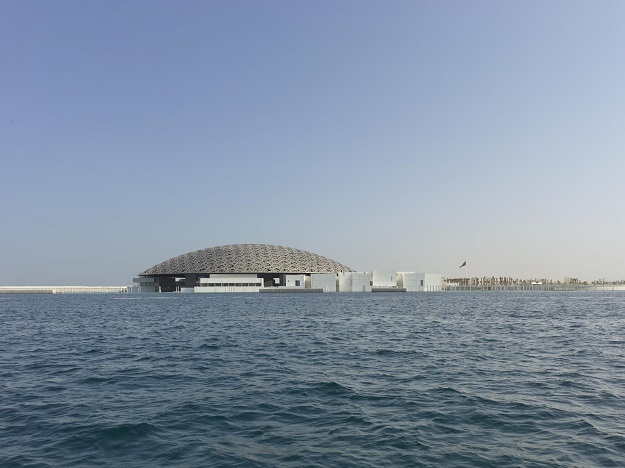 Daylight view of the museum from the sea. PHOTO: ROLAND HALBE via LOUVRE ABU DHABI
Daylight view of the museum from the sea. PHOTO: ROLAND HALBE via LOUVRE ABU DHABIAuthorities claim that the dome, at 7,500 tonnes, weighs as much as the Eiffel Tower in Paris, and takes inspiration from the cupola, a small-dome like structure found on top of buildings built by Muslim visionaries throughout history. It is a geometric structure of 7,850 stars, arranged at certain angles to reflect sunlight inside the museum, creating a stunning display which aims to mirror the effect palm trees, found in different parts of the country, have on the ground.
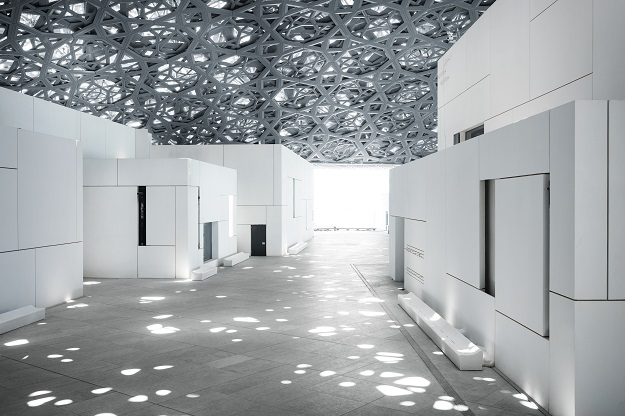 Louvre Abu Dhabi’s ‘rain of light’. PHOTO: MOHAMED SOMJI via LOUVRE ABU DHABI
Louvre Abu Dhabi’s ‘rain of light’. PHOTO: MOHAMED SOMJI via LOUVRE ABU DHABINouvel reportedly told the media last year that the dome he designed was inspired by the shade and open lattice of the mashrabiya, a screen that offers protection against the extreme sunlight in the Middle East, as well as privacy. The most visually pleasing part of the whole museum is, however, the fact that it is built into the sea. Located forty-eight meters above sea-level, the waters enter right into the museum, giving visitors the choice to arrive by either sea or land, and stirring a feeling unlike any other.
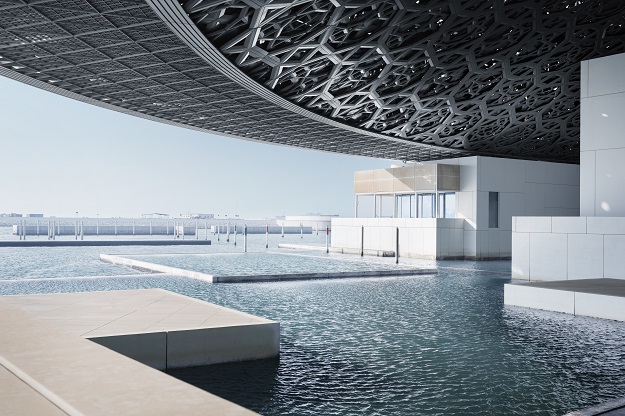 View of the museum overlooking the sea. PHOTO: MOHAMED SOMJI via LOUVRE ABU DHABI
View of the museum overlooking the sea. PHOTO: MOHAMED SOMJI via LOUVRE ABU DHABIOf the 55 buildings in the museum-city, 23 are exclusively devoted to galleries. In addition to these, there is an auditorium, a restaurant, an open plaza and a special museum just for children. The galleries are low-lying structures, mimicking the low-lying houses local populations in the desert live in. The whole relationship between the sea-faring people of the city and their art is meant to capture the emotional and intellectual essence of the area.
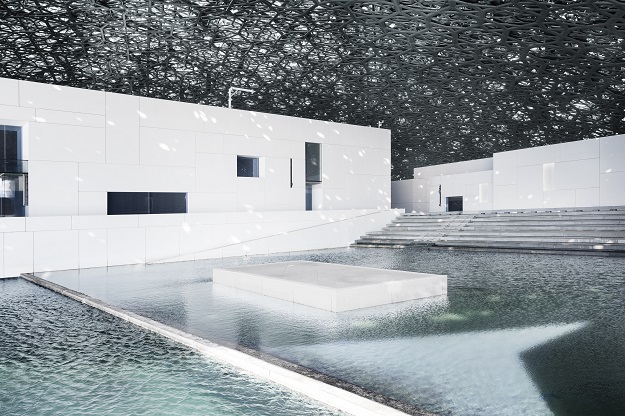 Louvre Abu Dhabi’s plaza. PHOTO: MOHAMED SOMJI via LOUVRE ABU DHABI
Louvre Abu Dhabi’s plaza. PHOTO: MOHAMED SOMJI via LOUVRE ABU DHABIOrient meets Occident
The museum has tried very hard to focus on the universal values which unite humanity, according to government officials. From architecture which combines French design and Arabic heritage to trying to rise above cultural differences by displaying works of art which celebrate the shared accomplishments of humankind, the Abu Dhabi Louvre is a beacon of hope, learning and culture, authorities in UAE maintain.
The Department of Culture and Tourism in Abu Dhabi has arranged the art and artefacts on display inside the museum according to the era in which they were made, thereby adding an interesting dimension to the experience of visiting the establishment. Usually, museums around the world group pieces of art according to geography. There are also galleries devoted exclusively to exploring world religions, trade and even the concept of power.
The story of humanity is told in twelve chapters, as nearly six hundred pieces of historic, cultural and artistic importance of different eras, from pre-history to the present day, are put together in galleries meant to inspire visitors to perceive the feats of the human race in an altogether different light.
The first gallery portrays artefacts from the first villages which humans settled in the Near East and North Africa, the second one takes visitors through the accomplishments of the first great powers of human civilisation, and the third explores the influence of early empires and city-states.
From there, one can traverse through the rise of world religions, the expansion of Asian trade routes and the increasing contact between the Mediterranean and the Atlantic as the centuries progressed. Galleries devoted to the art of living, the magnificence of kings and queens, and the concept of luxury are also present.
Three buildings cater exclusively to modern pieces, and display exhibits from the modern and post-modern era, right up to the globalised world of today. In addition to visiting these galleries, one can also take a peek at different exhibitions happening in the museum all around the year. As the dome of the museum-city rains light, the different types of stones paved on the floor invite admiration, and the walls, some of which have inscriptions and artworks, are a sight to behold.
Masterpieces
The Express Tribune photographed some of the more intriguing works of art on display at the museum for interested readers. A short explanation is provided with each image.
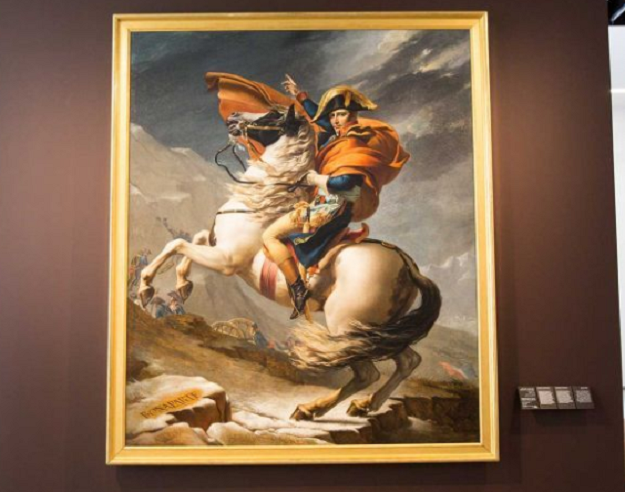 PHOTO: EXPRESS
PHOTO: EXPRESSA stunning portrait of French First Consul Napoleon Bonaparte, commissioned by the Spanish King of the time, elder brother of the French ruler, depicts Bonaparte crossing the Swiss Alps to lead the attack on Italy in the year 1800, a year after the end of the French revolution. It was made by Jacques-Louis David, a neoclassical French painter, sometime between 1801 and 1805.
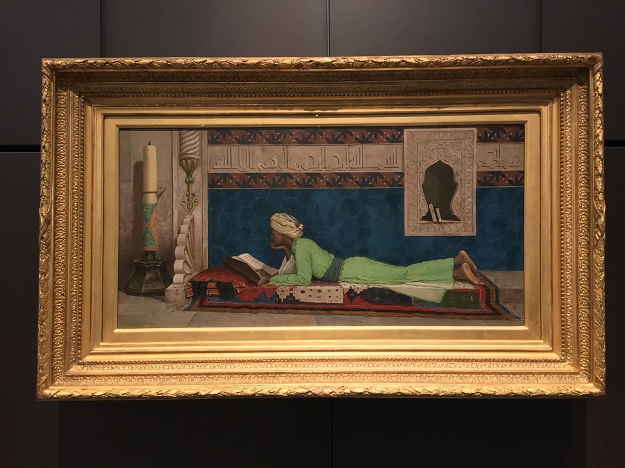 PHOTO: EXPRESS
PHOTO: EXPRESSA beautiful oil painting, done on canvas, brings together different aspects of Ottoman culture, fusing Islam, knowledge and the mystery of the Orient. It was made by Osman Hamdi Bey, an Ottoman public administrator and painter trained in France, in the year 1878.
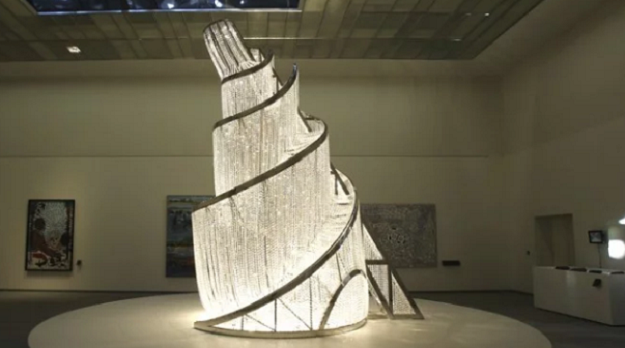 PHOTO: EXPRESS
PHOTO: EXPRESSThis artefact, known as the fountain of light, is twenty-three feet high and contains 32,400 glass crystals. Some experts claim that the artist, Chinese genius Ai Weiwei, made this piece for the opening of the Louvre last year, but according to reports, he had already made a similar structure for the city of Liverpool in England back in 2007. This one though dates from 2016, and is based on an unfinished Russian model for Comintern, the international organisation that aimed to bring about world communism.
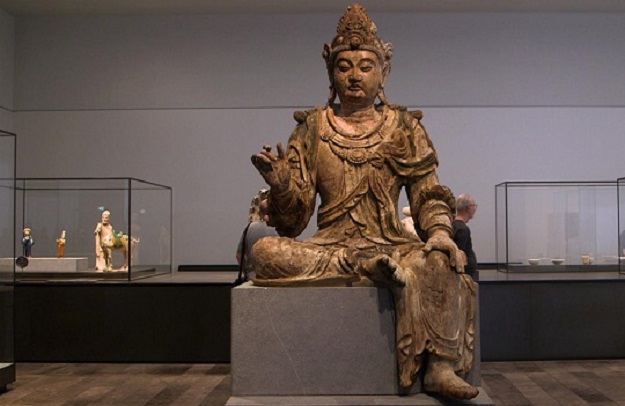 PHOTO: EXPRESS
PHOTO: EXPRESSA Buddhist sculpture from China, which is around 1.17 meters tall. The art of sculpting Siddhartha Gautama, referred to as Buddha, or the enlightened one in history books, originally started in India but was adopted by the Chinese during the fourth century before the common era.
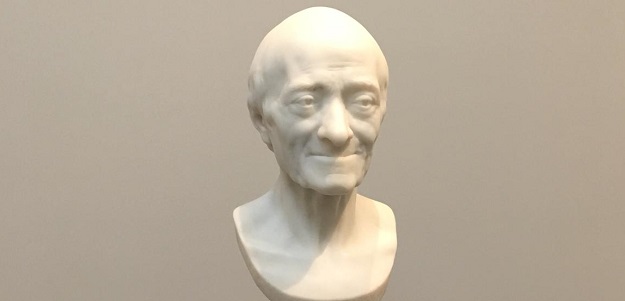 PHOTO: EXPRESS
PHOTO: EXPRESSA bust of French philosopher Voltaire. Originally named François-Marie Arouet, Voltaire was a French writer, philosopher and historian from France in the early eighteenth century. He produced many works during the enlightenment period in Europe, including plays, poems, novels, essays, as well as historical and scientific works.
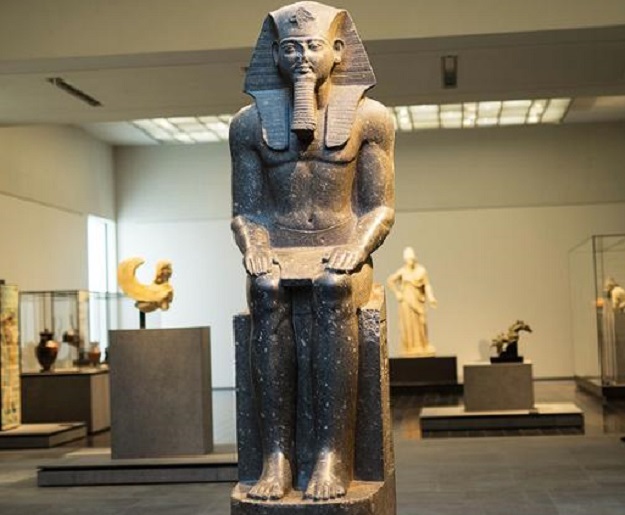 PHOTO: EXPRESS
PHOTO: EXPRESSThis is a statue of Egyptian pharaoh Ramses II sitting in a well-defined pose, indicating his exalted status in ancient Egypt. The statue dates from sometime during his reign (1279-1213 BCE) and is 2.5 meters in length. The man is depicted with a beard, and has a head cloth with a cobra on it, further indicating he was revered as some kind of a supreme being, according to Egyptian mythology.
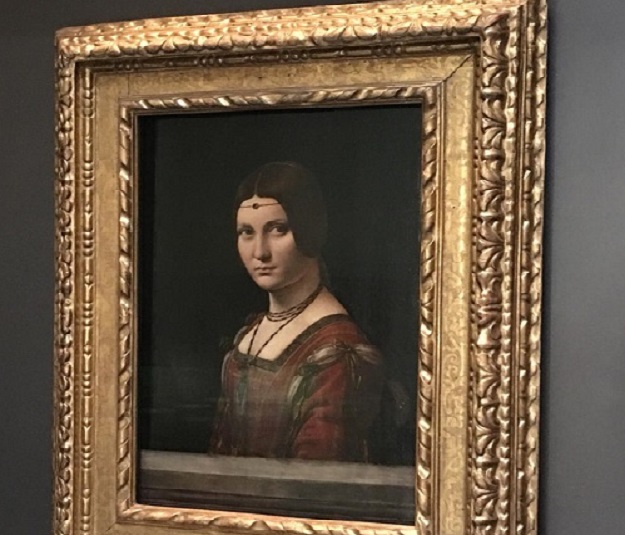 PHOTO: EXPRESS
PHOTO: EXPRESSLeonardo da Vinci, the Italian polymath, painted this portrait of a woman sometime between 1495 and 1499. The oil painting is titled portrait of an unknown woman and is one of the four known portraits painted by the famous Italian in existence. Leonardo da Vinci’s other masterpiece, Salvator Mundi (Saviour of the World), was recently acquired by Abu Dhabi’s Department of Culture and Tourism but has not been put on display for reasons not yet clear.
 PHOTO: EXPRESS
PHOTO: EXPRESSThis oil painting is titled 'The Subjugated Reader' and was painted in Paris in the early twentieth century by Belgian artist Rene Magritte. The artist is famous for having created a number of thought-provoking images, including this one.
Celebrations and beyond
Louvre Abu Dhabi also held a beautiful ceremony to mark the one-year anniversary of the museum. Visitors were treated to live shows, special exhibitions and other festivities planned for the occasion.
Mohamed Khalifa Al Mubarak, who heads the culture and tourism department responsible for overseeing the establishment, delivered a statement to the press which outlined a plan to develop the institution as one of the leading global cultural icons.
“One year ago we spoke about Louvre Abu Dhabi as Abu Dhabi’s gift to the world – and today we are proud to have shared it with more than one million visitors already," read a press release issued on his behalf.
According to the document, Mubarak further said that Louvre Abu Dhabi had become an icon and a favourite destination in Abu Dhabi both for local communities and visitors to the city. "Our strong collaboration with our French and regional partners supports the museum’s mission to tell universal stories and we thank them."
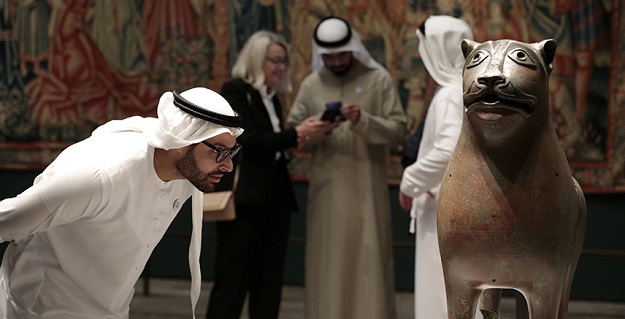 Mohamed Khalifa Al Mubarak, Chairman of the Abu Dhabi Department of Culture and Tourism looks at the Monumental Lion sculpture at the Louvre Abu Dhabi Museum in Abu Dhabi, United Arab Emirates. PHOTO: REUTERS
Mohamed Khalifa Al Mubarak, Chairman of the Abu Dhabi Department of Culture and Tourism looks at the Monumental Lion sculpture at the Louvre Abu Dhabi Museum in Abu Dhabi, United Arab Emirates. PHOTO: REUTERS"Yet our greatest success, 10 years in the making, is the next generation of Emirati museum professionals who are trained to the highest standard in the cultural sector and are leaders in their field," the statement added.
Mubarak praised the diversity of Louvre Abu Dhabi’s audiences, which, according to him, not only reflected Abu Dhabi’s multicultural society but also illustrated its ambition and universal narrative.
"Our aim to create bridges between cultures and nurture dialogue between communities, appeal to many, from seasoned art enthusiasts to younger audiences and families."
Official figures claim that the museum has hosted more than 1,000 school trips, 5,000 guided tours, workshops and masterclasses, and programmed 115 special events from live performances to talks, film screenings and concerts in the first year.
Director Abu Dhabi Louvre Manuel Rabaté also issued a statement to the press to mark the one-year anniversary, in which he said that the establishment felt privileged to gather treasures under an iconic dome on Saadiyat island.
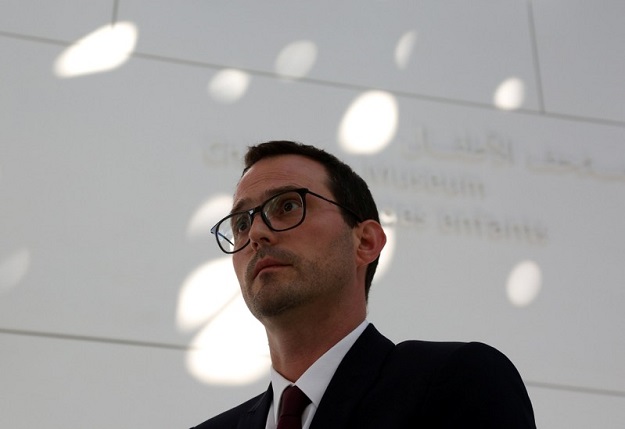 Manuel Rabate, Director of Louvre Abu Dhabi, looks on during an interview with Reuters in Abu Dhabi, United Arab Emirates. PHOTO: REUTERS/SATISH KUMAR
Manuel Rabate, Director of Louvre Abu Dhabi, looks on during an interview with Reuters in Abu Dhabi, United Arab Emirates. PHOTO: REUTERS/SATISH KUMAR"We are also thrilled that so many visitors came to discover our universal narrative this year. We have access to some of the most incredible collections and benefit from collaborating with some of the world’s most qualified museum experts," he said, adding, "But being a young museum in this region empowers us to be experimental and encourages us to be agile to appeal to our incredibly diverse audiences."
A summary of the exhibitions planned for the coming year was also given to the media at the event, which will be based on the theme of change in society, and will feature art from cosmopolitan Paris of the early twentieth century, an exhibition focused on exploring the concept of luxury from antiquity to present times, as well as an exhibition honouring Charlie Chaplin and cinematic history.


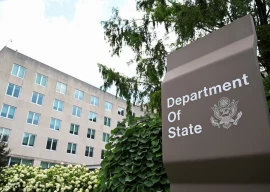















COMMENTS
Comments are moderated and generally will be posted if they are on-topic and not abusive.
For more information, please see our Comments FAQ